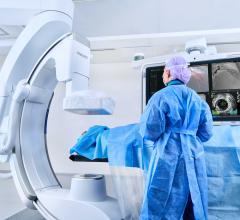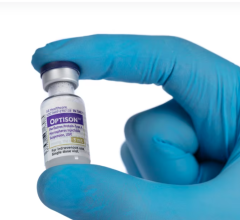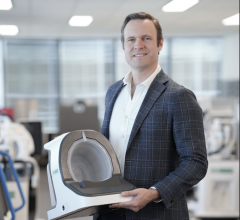
July 5, 2017 — With worldwide cardiovascular deaths at an all-time high, European scientists have developed a new handheld scanner that can read the heart's vital signs like a supermarket barcode reader can scan items at the checkout. This would allow a general practitioner (GP) to diagnose even preclinical patients for the early onset of a disease.
According to the World Health Organization, cardiovascular disease is the leading cause of death in the world today. In 2015 over 17.3 million people, roughly 30 percent of all global deaths, died as a result of cardiovascular conditions such as coronary heart disease, heart attacks or strokes.
CVDs can be identified using a number of medical tools, including cardiac biomarkers, cardiac catheterization, chest X-ray, electrocardiogram (ECG), Holter monitoring and cardiac magnetic resonance imaging (MRI).
However, because they are complicated or expensive, routine early forecasting of CVD is impossible in large populations at present.
This new diagnostic tool developed by the EU's Horizon 2020 collaboration 'CARDIS', ('CARdiovascular disease Detection with Integrated Silicon Photonics'), can read the heart's vital signs with one click of a button, similar to the way a handheld supermarket scanner can scan barcodes at the checkout.
Employing laser Doppler vibrometry, a technique using photonics technology, the device can pick up vital information about the status of the heart using light, in a fast and inexpensive way.
It works by harnessing the Doppler effect, the phenomenon used to observe changes in pitch of light or sound from a fixed point, and commonly experienced when an ambulance siren passes and changes in tone.
Using the Doppler shift of the reflected light, the scanner builds up a 'vibration map' of the chest and heart area, which can highlight the telltale signs of CVD, such as plaque build-up, arterial stiffness, arterial stenosis or heart dyssyncrony. Project coordinator Mirko de Melis explained:
"Our device employs the latest photonics technology, allowing a user to make measurements of the vibration characteristics of the heart without even touching it.
"A stiff artery creates a faster pulse pressure from the patient's beating heart. By measuring the pulse wave velocity, we can assess the stiffness of the arteries using light and make informed judgments, long before the onset of cardiovascular disease," he said.
Although there are a number of vibration sensors that exist for this purpose, LDV is non-invasive and provides a much higher degree of accuracy in a fraction of the time.
"At present, millions considered to be low or moderate risk are walking around undiagnosed,” said de Melis. "It is our long-term goal to place such a device in the hands of the GP, the first point of contact for the mass population, as part of a routine health examination."
"The screening of potential sufferers, who are in their early 40s, would delay the onset of the condition by 5-10 years. Assuming a sufferer would comply with the health advice given and adopted a change in lifestyle, this device allows the medical professional to halt or even reverse CVD," De Melis said.
The CARDIS team believe the key to the success of a mass screening program at the GP-patient level is the inexpensive and portable nature of the new laser scanner: "Our device would be cheap, easy to use and extremely effective. With cost of an echocardiographer anything above EUR 100k, and an arterial tonometer at EUR 5,000-EUR 6,000, the CARDIS scanner would be reasonably priced at around EUR 1,500. However it is the potential savings on our health services caused by the early diagnosis and prevention of CVD that will be the most rewarding," De Melis explained.
While the EU consortium is happy with their demonstration model, CARDIS will be ready to unveil their prototype in summer 2018.
For more information: www.cardis-h2020.eu




 September 30, 2025
September 30, 2025 









